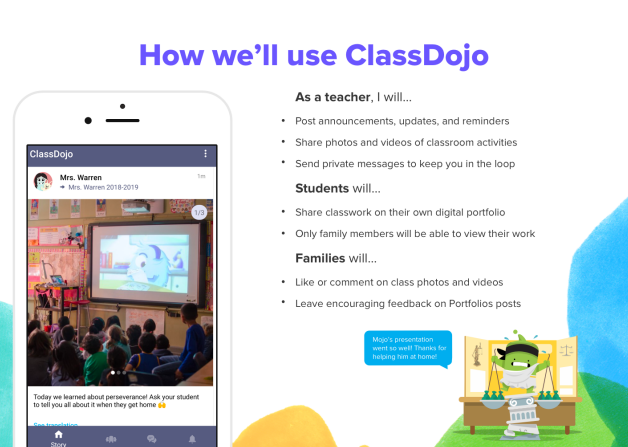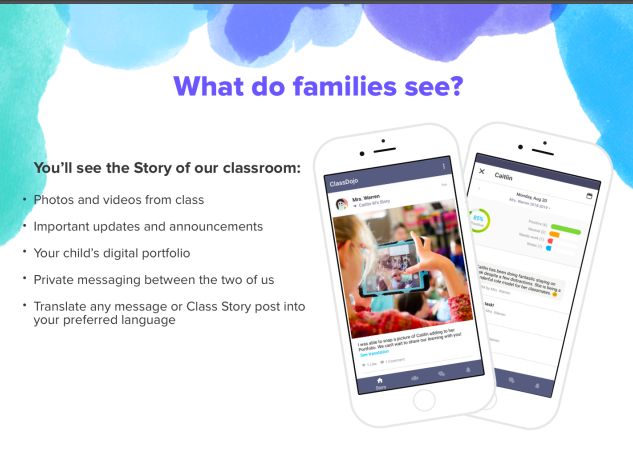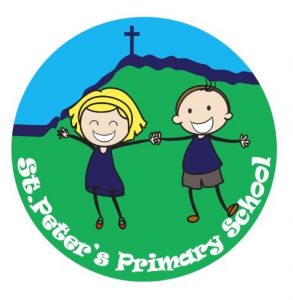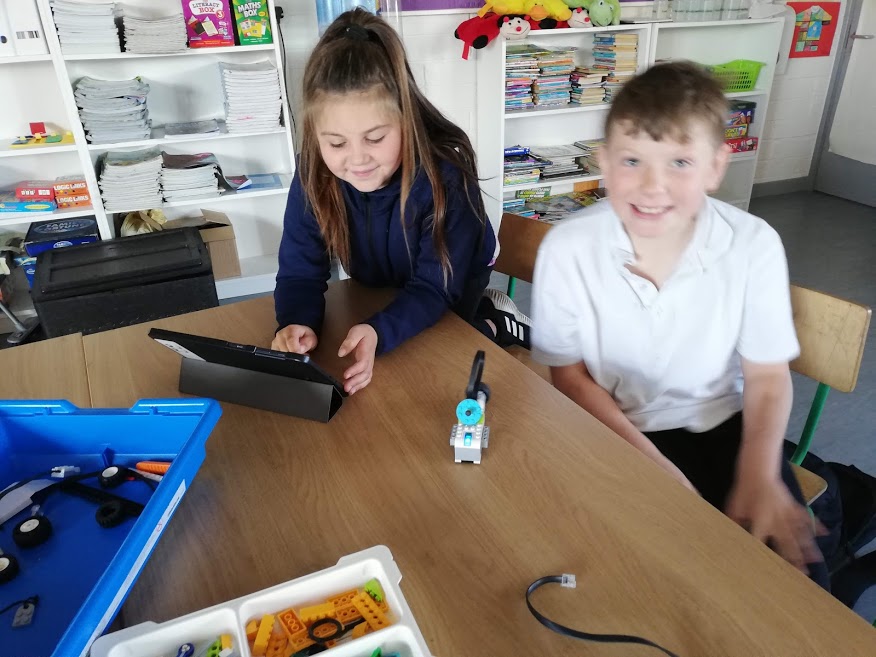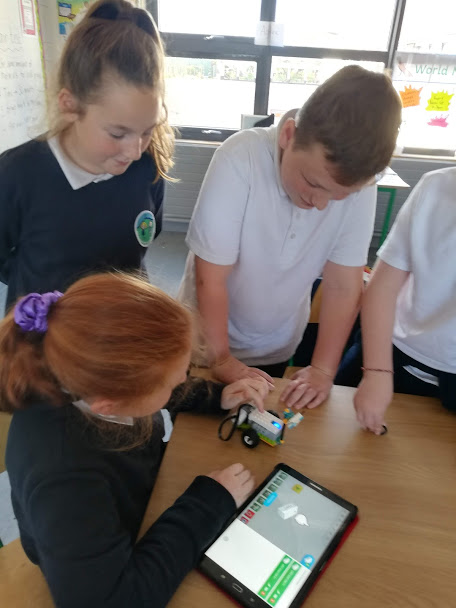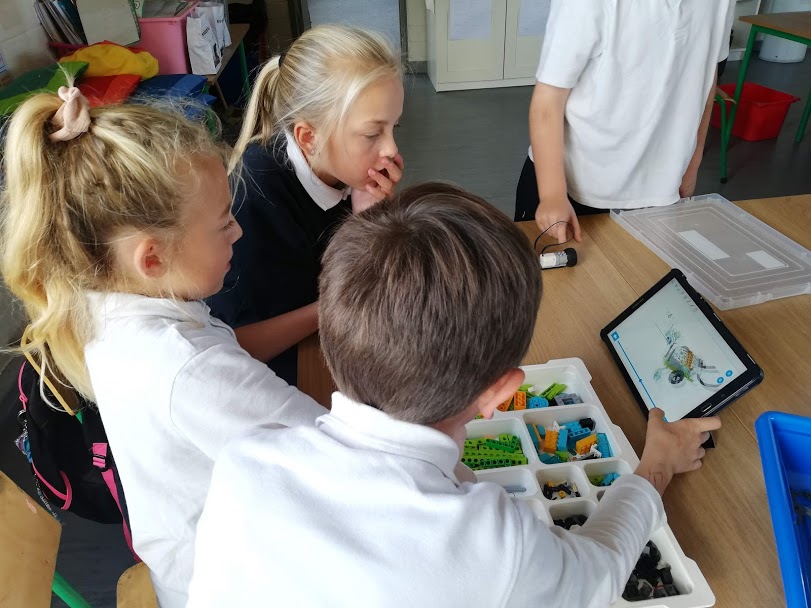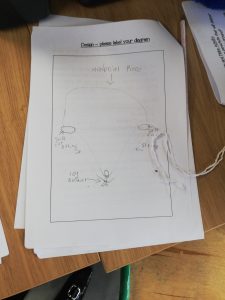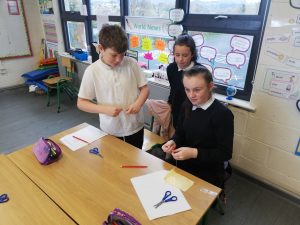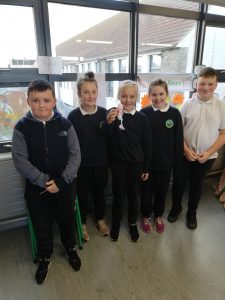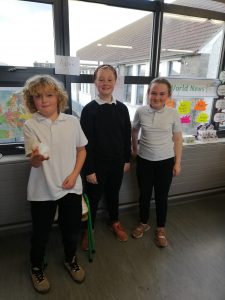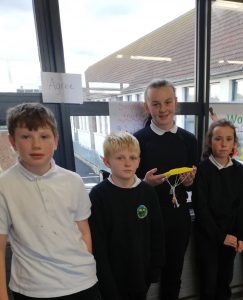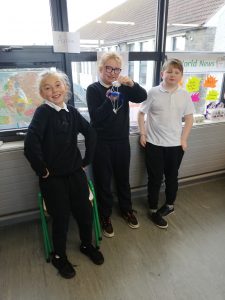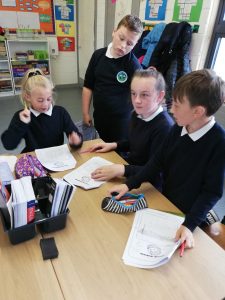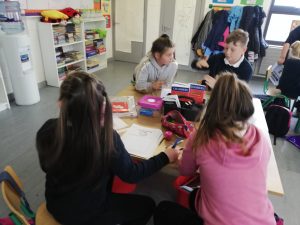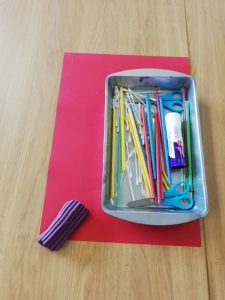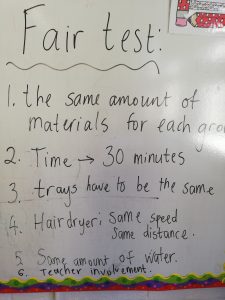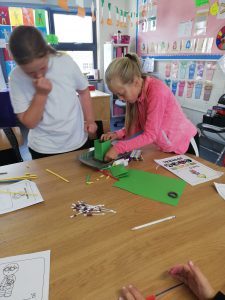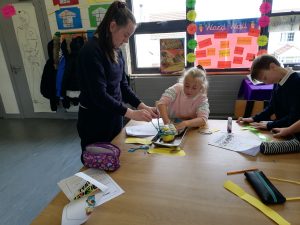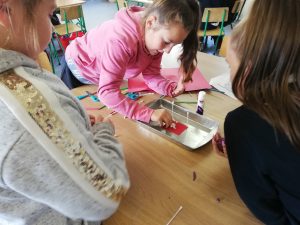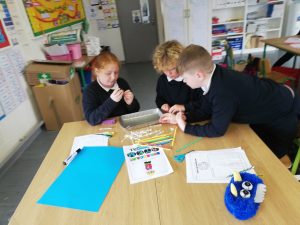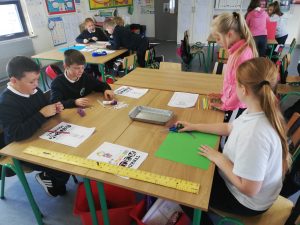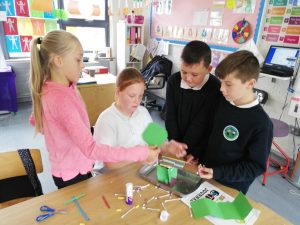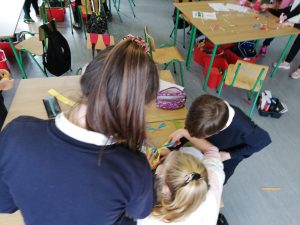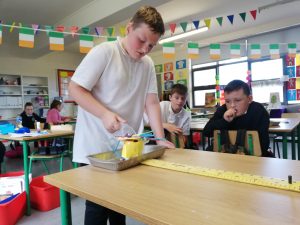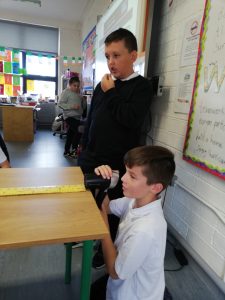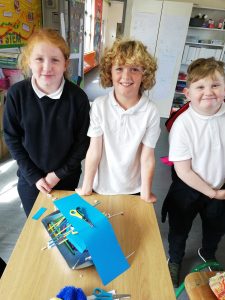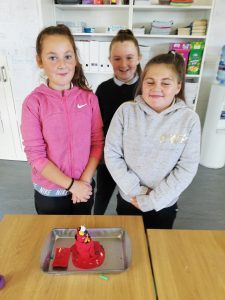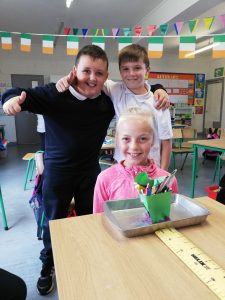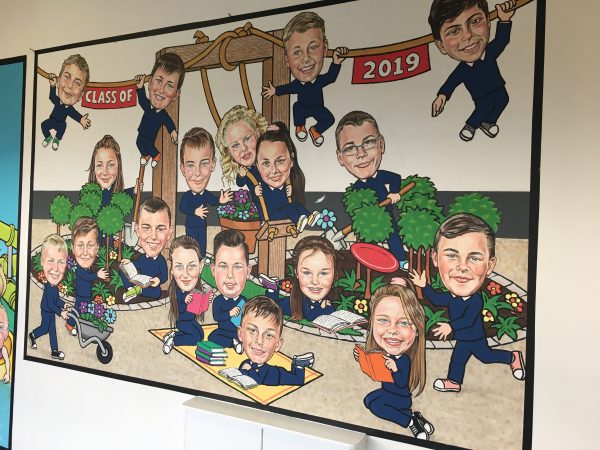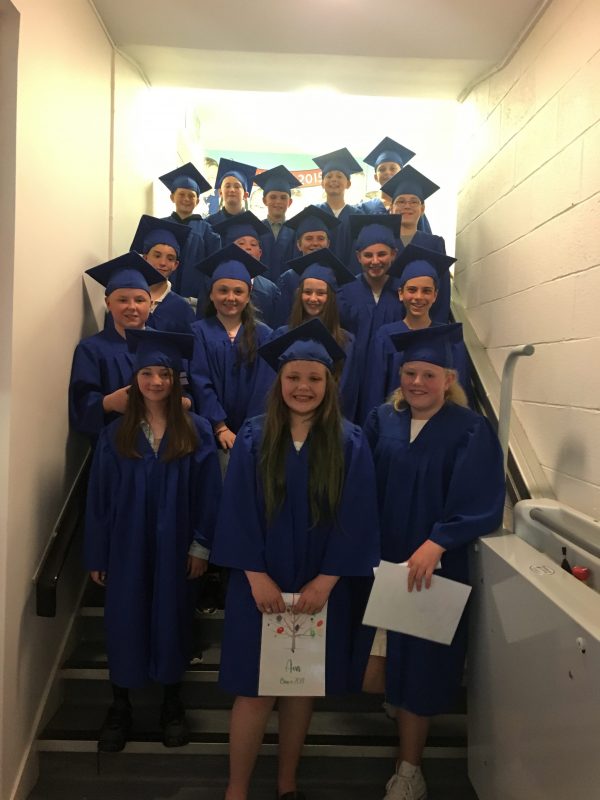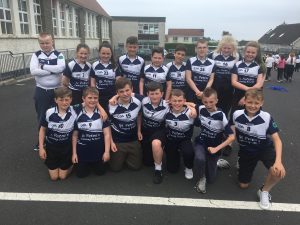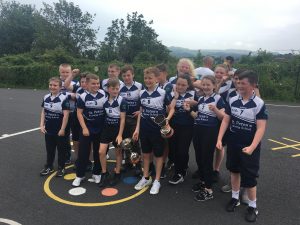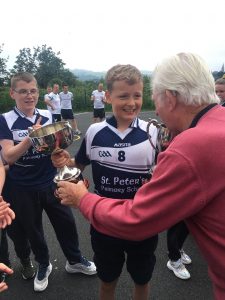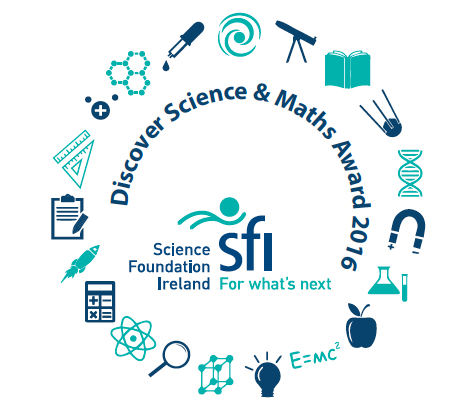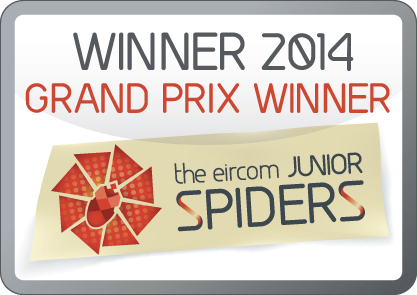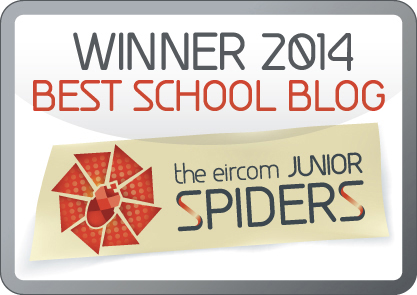5th class have really enjoyed using Lego WeDo
this year to create lots of different constructions that we then program to
move 
We really love Lego WeDo because it’s easy to use and allows us to use our coding skills. We love taking part in STEM challenges and recently built our own models. We worked in teams and had collaborate to build our chosen creation. We used our tablets to follow the instructions and to make sure that our Lego was built correctly – although it’s important to remember you can be as creative as possible and some of us added some ‘special additions’ to our models 
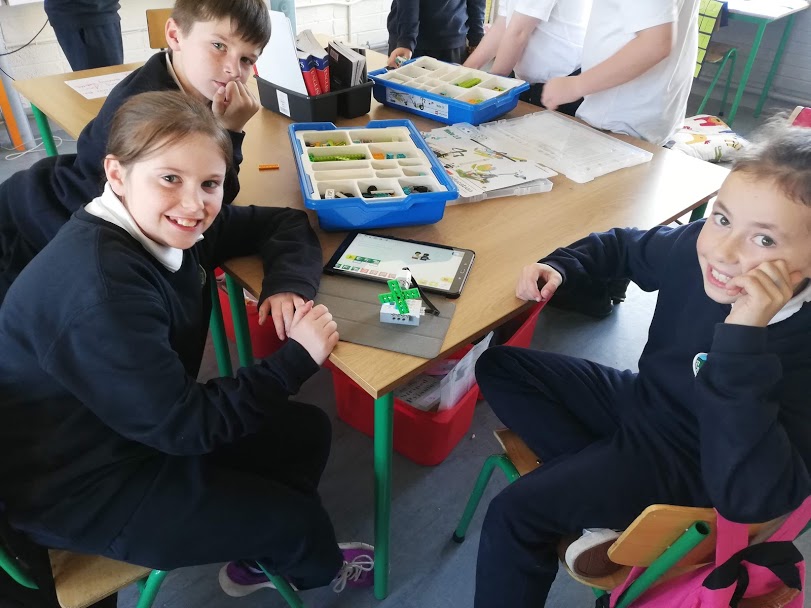
We know that STEM stands for ‘Science, Technology, Engineering and Mathematics’ and during our model challenge, we got to use all of these skills! We talked about how important the engineering aspect of this challenge was, our models needed to be able to move freely so it was important to consider where to put wheels and battery packs to allow for this. Technology allowed us to program our models to move which was the most exciting part!
Most groups decided to follow the instructions carefully and build a ‘simple’ model first, but our confidence soon grew and before we knew it we had created models of cranes that could shake and simulate an earthquake!
Programming on the tablets proved to be quite exciting as we added further instructions to control the movements of the Lego models. We loved trying new coding combinations to see which worked best and we felt confident doing this after completing a Microsoft coding course earlier in the year 
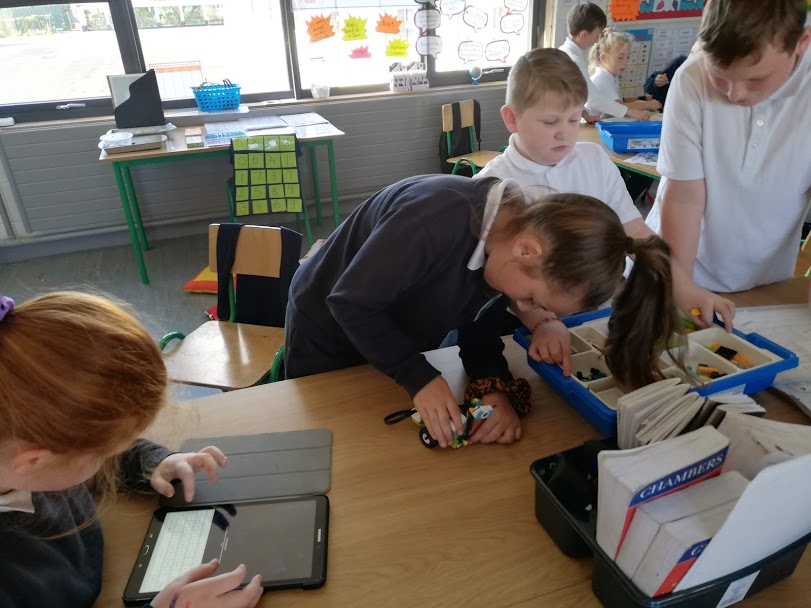
We learned that it was important to listen to our teammates and enjoyed adding in our own extra challenges, for example, building ‘roads’ for our tank model to travel on. We used paper and cardboard to do this and were very pleased when we successfully coded the model to travel along the ‘road’!
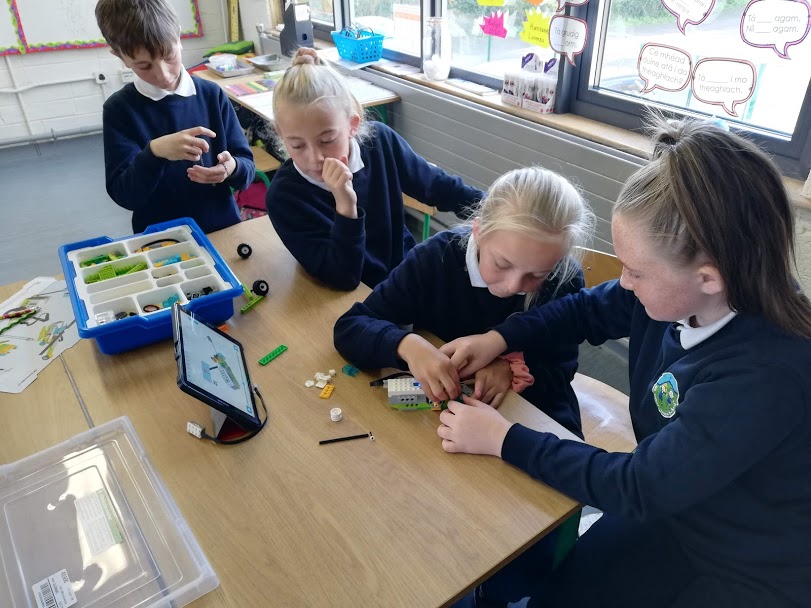
Our Lego WeDo models were even featured on RTÉ’s Nationwide and we’re so proud we could explain how Lego WeDo works, so that lots of other children can get involved in STEM challenges!
Discover Primary Science
2nd Class Lesson
Brief Summary of our STEM Experiment:
- Stimulus/Rationale:
Recently, 2nd class wanted to investigate different methods of transport for Santa Claus. This was stimulated by a question I posed to the class, ‘If the reindeer went on strike on Christmas Eve how would Santa Claus travel to deliver presents to all the boys and girls?’ We brainstormed some alternatives coming up with rockets, flying cars, jet-pack’s, wings etc. however a quick and feasible alternative we agreed would be a parachute.
- Task:
Design and build a parachute for Santa Claus. The aim is to keep him and the sack of toys safe in their parachute when landing.
Breakdown of STEM in the lesson:
Step 1: Science
Strand: Materials
Strand Unit: Properties and characteristics of materials
Children were investigating the characteristics of materials and how they influence the force of movement of their designed parachute. They explored the durability, and transparency of the materials being used (tissue paper, cling film, tin-foil).
Investigating if;
- The materials were strong enough to hold Santa Claus in the egg-stand.
- They could withstand and catch air in them to slow down the force of movement when being dropped from a height to ensure Santa Claus landed safely.
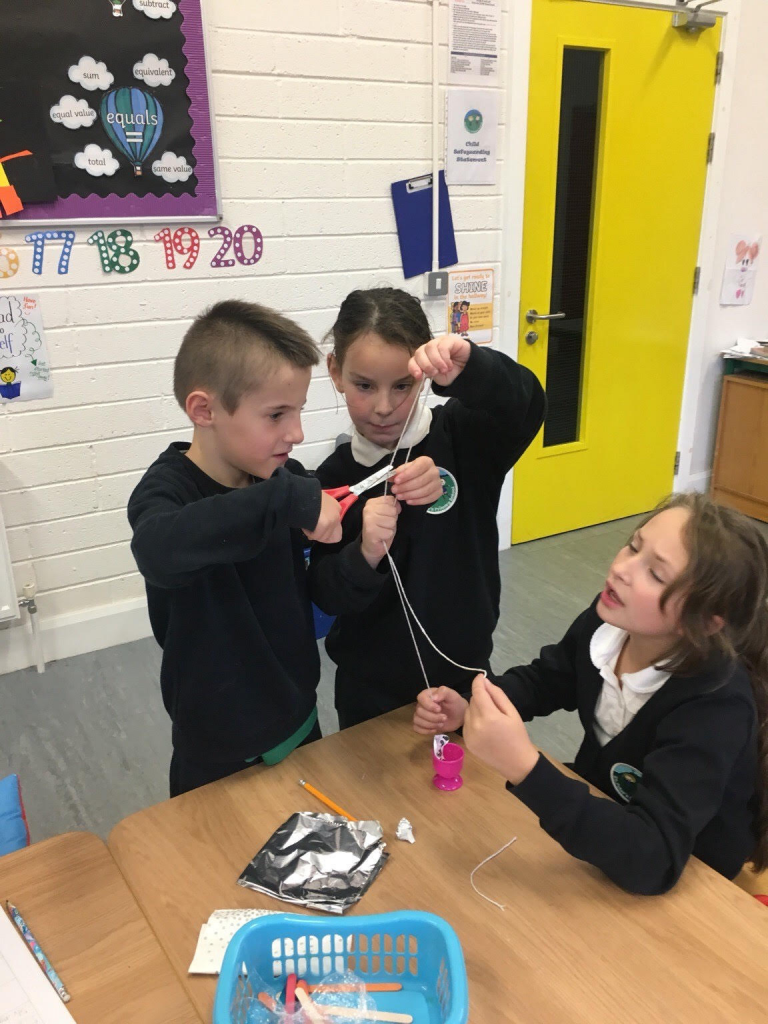
Step 2: Technology
- Children used an iPhone to video record the group of 4 children who were dropping their 4 parachutes at one time. This video was then put into slow-motion to observe what group/parachute had reached the ground slowly and safely to ensure Santa Claus had safely landed without any difficulty.
This was essential in the investigation process as children were enabled to see the way different designs and different materials impacted the parachute. They were enabled to observe and differentiate between the parachutes that were strong and safe and those that were not.
- They also used the stopwatch app on an iPhone to measure the time taken for the parachute to reach the ground from the height at which it was dropped.
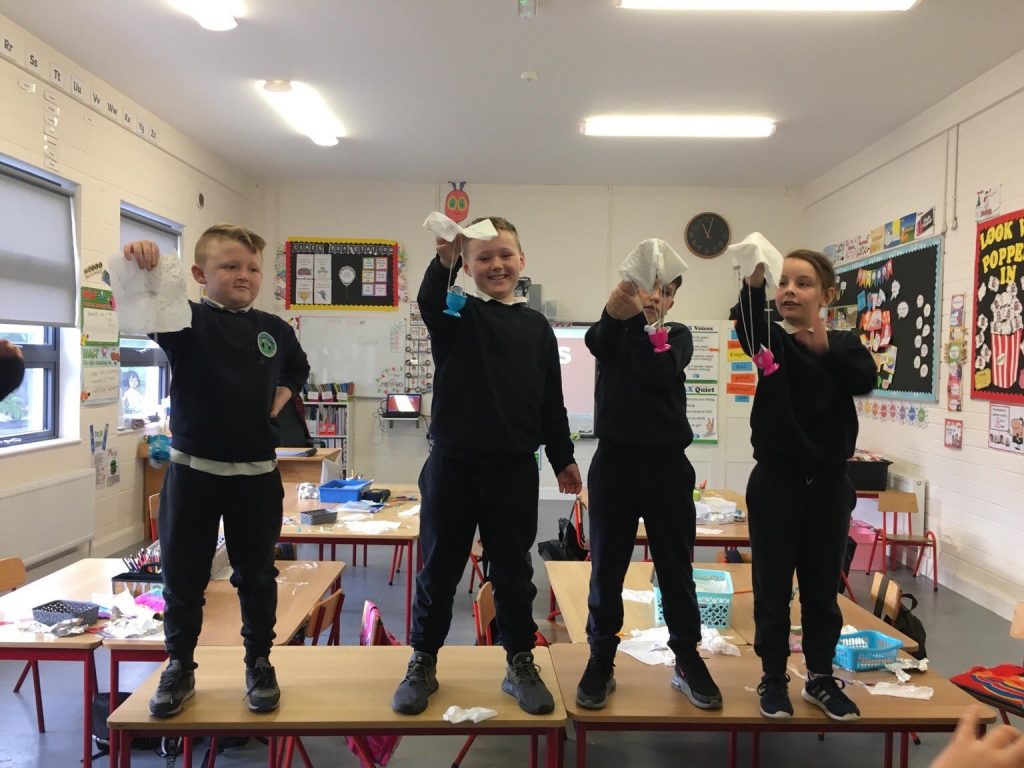
Step 3: Engineering
Children engaged in engineering through designing a plan to make a parachute and the actual construction of their parachutes.
Using materials provided the children were asked to ensure they were creating fair designs – that their parachute material was the same size for each material used (cutting the tin foil, tissue paper and cling film to the same size).
Children had to make sure that the length of each string being used was the same so that the egg-stand where Santa Claus was would not topple over. That they had created a sturdy structure for him to sit comfortably throughout the time he would be in the parachute.
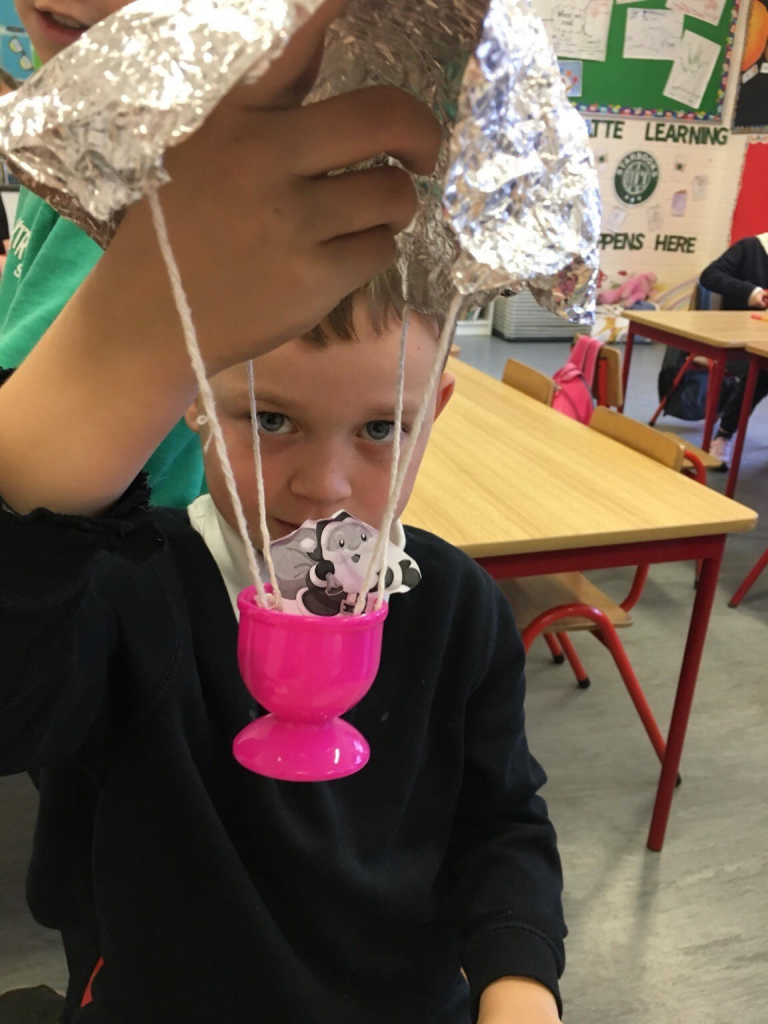
Step 4: Maths
Children were using their maths knowledge to implement skills needed to measure length and time.
- Children had to measure the length of strings used to connect the parachute to the egg stand. They needed to ensure the length of all 4 strings was the same length. They also used their skills in measurement to measure the length and width of the square/rectangular piece of material used as the parachute (tin-foil, tissue paper and cling film) to ensure they were all the same size and that the investigation was a fair test.
- Children used the stopwatch app on an iPhone to measure the length of time taken for the parachute to hit the ground from the height at which it was dropped. They needed to observe and identify what parachute was the safest by looking at the different times it took each parachute to fall.
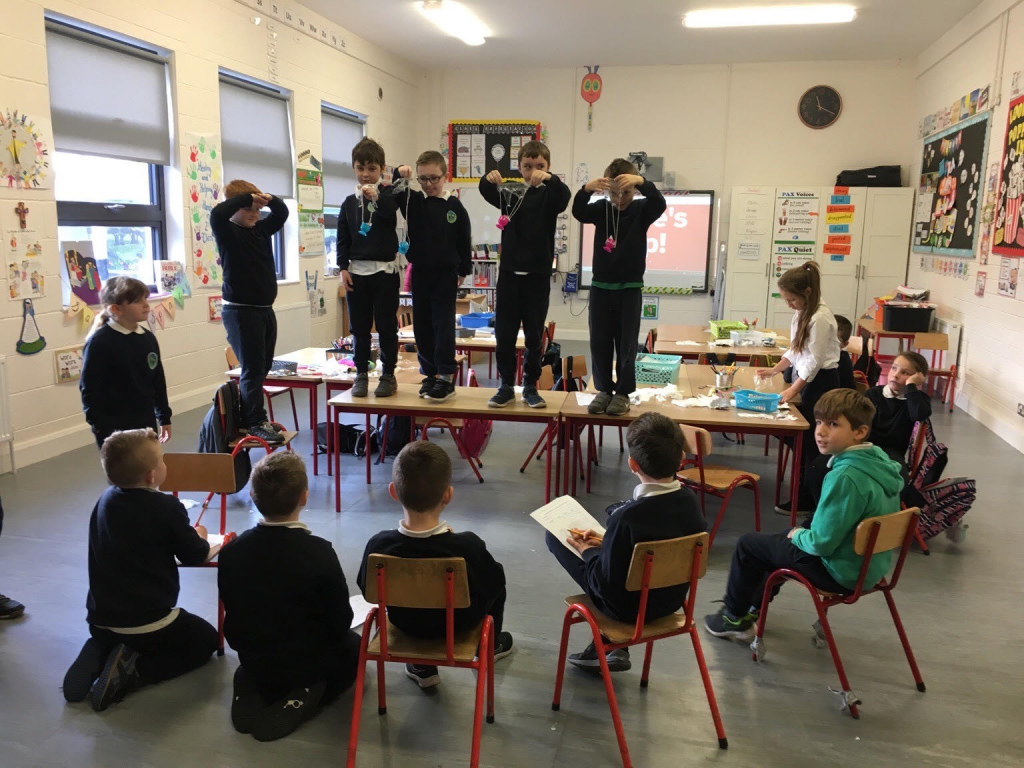
Step 5: Reporting:
POE Investigation Sheet
Children were required to fill out a POE – Predict, Observe, Explain sheet throughout the experiment noting their predictions, observations and explanations of how each material performed as a parachute.
Children had to discuss within their groups what parachute/material was the most appropriate material Santa could use to build his parachute. Their result was then presented to the class by the spokesperson in their group.
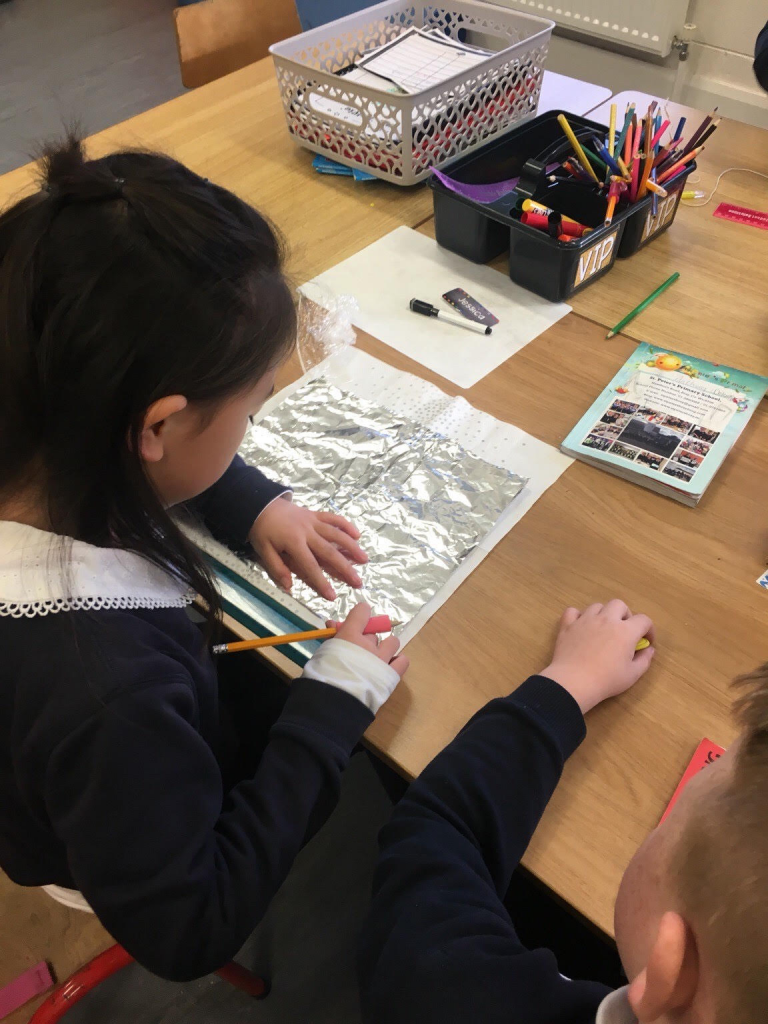
Our questions were –Which liquid will cause our candy cane to disappear the fastest?
To conduct our experiment, we needed: 3 plastic cups, 3 candy canes, vinegar, warm water and cold water.
We labelled our 3 clear cups and then filled the cups with warm water, cold water and vinegar.
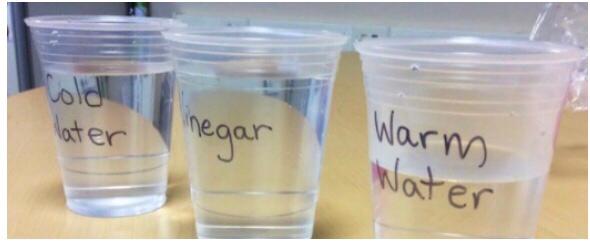
Then, we made predictions. We thought the vinegar would make the candy cane disappear because it was smelly!
We voted to put the “hook” side of the candy cane down so that more of the candy was in the liquid.
We put one candy cane in each cup and watched to see what would happen.
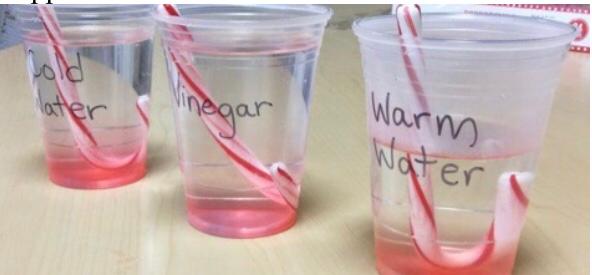
Within 2 minutes all three candy canes were starting to turn the water pink or red. It was definitely magic!
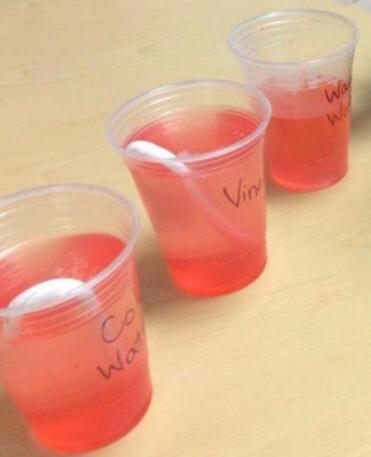
We observed the three cups and compared the reactions. Within 25 minutes, we had our results and we could determine if our predictions were correct or correct.
The cup with the warm water was the first liquid to make the candy cane completely disappear and dissolve.
The vinegar cup was the first liquid to remove all the red from the candy cane.
The cold water removed the colour and disappeared but more slowly than other two liquids.
Next, we recorded our observations and results. We learned lots of new vocabulary words such as dissolve, prediction, result.
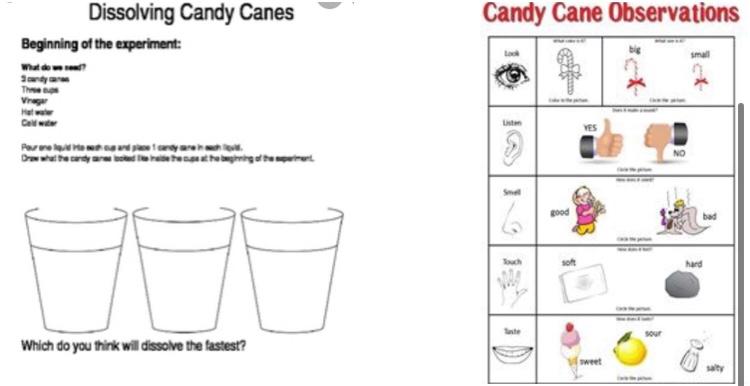
After our experiment……we found the quickest way to make a candy cane disappear is to eat it!!!
In celebration of Science Week 2019 we decided to carry out another STEM activity! We love designing and making and wasted no time in deciding what STEM activity to try this time. We have been learning about World War 2 this month and last week we watched some footage of the D – Day parachute landings in Normandy in 1944. We wanted to learn some more about how the parachutes that the soldiers used worked and what they were made from.
We looked at various video clips and found out that the parachutes were often made from silk and nylon. We were surprised as we thought silk was a soft material that wouldn’t have the strength to be used in a parachute.
We then listed materials that we knew were strong, things like rubber, rope and leather. This led us to ask ‘how does a parachute work?’ Parachutes need to be able to catch air inside them to make them work so some of these options seemed a little too heavy. We learned about air resistance and how it slows things down that are moving fast through the air. Parachutes need to make sure that enough air resistance will be created to work successfully.
We completed our STEM booklet and then carried out our design and make activity. We needed to test the effectiveness of different materials acting as parachutes – we tested felt, tissue, rubber and plastic.
Each group received the same amount of materials and time to complete the activity in. We only had one variable – the material – to ensure we completed a fair test.
We received:
- one piece of material
- 1 metre of Sellotape
- 2 metres of string
- 4 pairs of scissors
- a weight (a Lego toy soldier)
We had 20 minutes to make our parachutes!
Our results were interesting. We concluded that the parachute made from rubber took the longest to reach the ground. This was followed closely by the parachute made from felt. Both of these designs were dome – shaped and so could catch more air. We think that the shape and amount of material used really affected the success of the parachutes. We also think the weight of the material used is extremely important.
Another successful STEM activity completed and lots of design and make and Maths skills practised!
Earlier this month we decided it could be interesting to learn more about the force and nature of hurricanes as the news was covering a lot on Hurricane/Storm Lorenzo.
We decided undertaking a STEM challenge might be a fun way to do this!
Firstly, we needed to carry out some research! We looked online for some footage of hurricanes and also read some helpful articles that advised people what to do in the event of a hurricane landing near them.
We learned that hurricane winds can travel up to 200 miles per hour and that hurricanes form in the sea. They also tend to have heavy rain. The centre of the hurricane is called ‘the eye’ and it has no clouds, wind or rain – we thought this was very interesting! We wondered if you got into the eye, would you be able to stop it? Hurricanes are ranked on a scale from 1 – 5 depending on how serious they are (5 is the most dangerous kind).
You should always stay inside during a hurricane and should also try to get to high ground.
After looking at some articles and videos on RTÉ news we found out that Hurricane Lorenzo actually turned into a tropical storm before passing over Ireland and that hurricanes don’t really reach us – thankfully!
Since all of our research was complete, the next stage was planning!
We were given our STEM challenge – ‘Imagine you are an engineer and have been given the responsibility of designing a hurricane – proof building. Since flooding can occur you need to make sure your building is high off the ground and due to strong winds, your roof needs to be wind resistant’. We were excited to start and discussed what the job of an engineer entails! We had 10 minutes to plan our own individual designs and 10 minutes to plan in our group. We were surprised that we all had such different ideas!
Then it was time to get cracking on actually building our hurricane – proof structures! We had the following materials and 30 minutes on the clock;
- 2 pairs of scissors
- 1 piece of A3 card
- 20 art straws (paper)
- 30 Cotton buds
- 1 ball of plasticine
- 1 metre of Sellotape
- 1 glue stick
We discussed what would help us in the challenge and everyone agreed that teamwork and cooperation would be really important if we were to complete the challenge successfully. We also talked about the challenge being a ‘fair test’. We said that this meant that each group had equal time, equal resources and equal teacher input.
Check out some photos of us at work!
After our building time was up, it was time for some testing to take place!
We used a hair dryer and 100ml of water to test our hurricane structures. We agreed that the hair dryer needed to be placed 1 metre away from the structures and that we would use it for 1 minute. We poured in the water and each time we used the hair dryer, we put it on the highest setting.
Our results were as follows for the first test:
Group 1: structure remained standing and did not fall
Group 2: structure remained standing and did not fall
Group 3: structure remained standing but fell with 15 seconds to go
Group 4: structure remained standing and did not fall
We decided we should try again for another minute. These were our results:
Group 1: structure remained standing and did not fall
Group 2: structure remained standing and fell with 25 seconds to go
Group 3: structure had already fallen in first test*
Group 4: structure remained standing and did not fall
We discussed our results and concluded that the 2 structures that did not fall at all, had stronger bases and walls wrapped around the whole structure with no gaps. The roofs could also withstand gusts from the hair dryer, as they were bound well together with Sellotape and plasticine.
We really enjoyed taking part in the STEM challenge!
STEM for Fun with the junior classes started a couple of weeks ago. Here Junior Infants, Senior Infants and 1st Class were brought to the hall each week to work with teachers and parents to engage in Science, Technology, Engineering and Maths games and challenges.
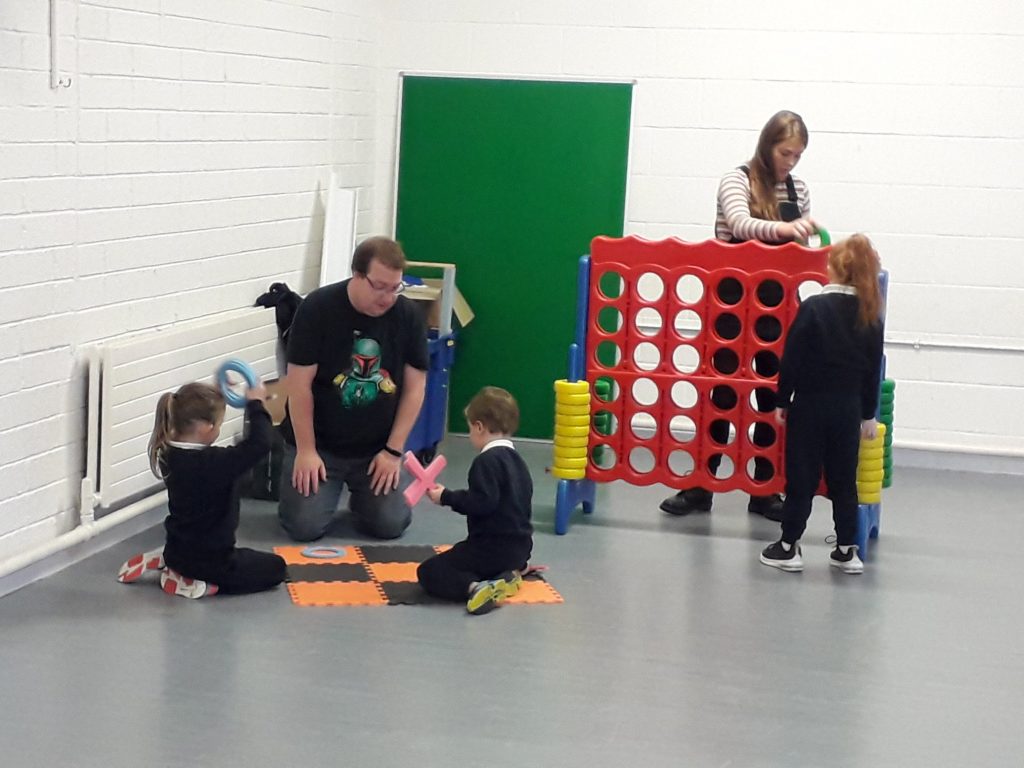
This is a way for the children to engage in STEM skills in a fun and less formal way. We have been running STEM for Fun in the school for the last 4 year now and is always a favourite with pupils.
Throughout the year each class will get a 5 week block of STEM for Fun with thanks to our HSCL, School Completion, teachers and parents. Check out some of our pictures below (where the adults seem to be having just as much fun as the children!)
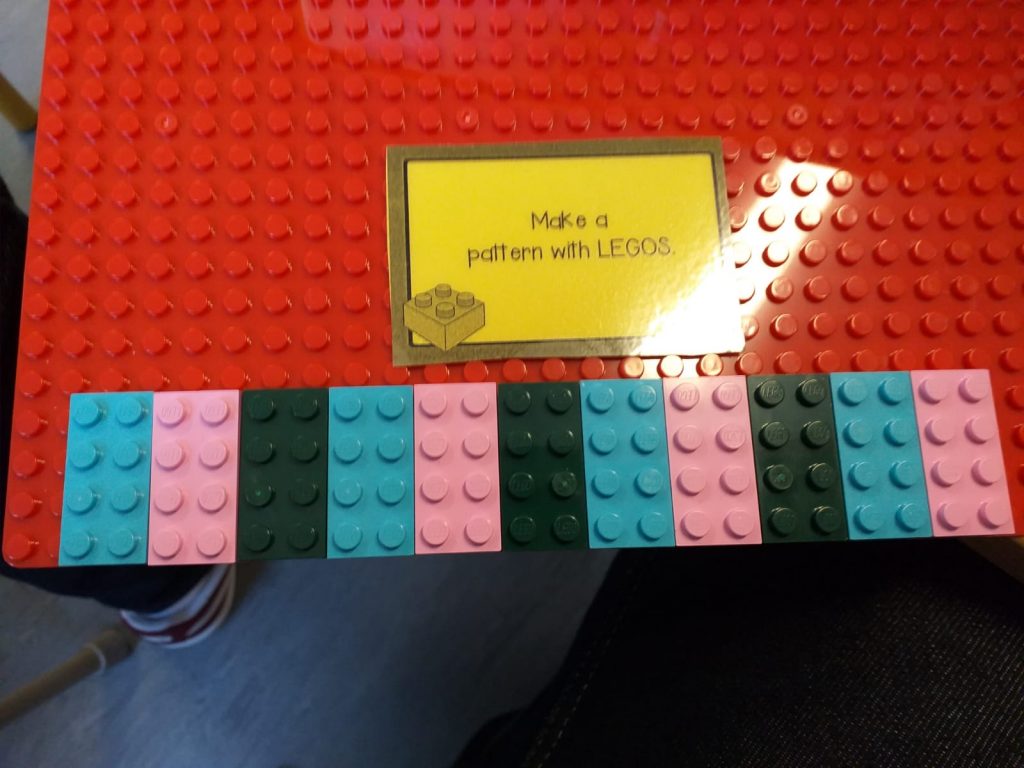
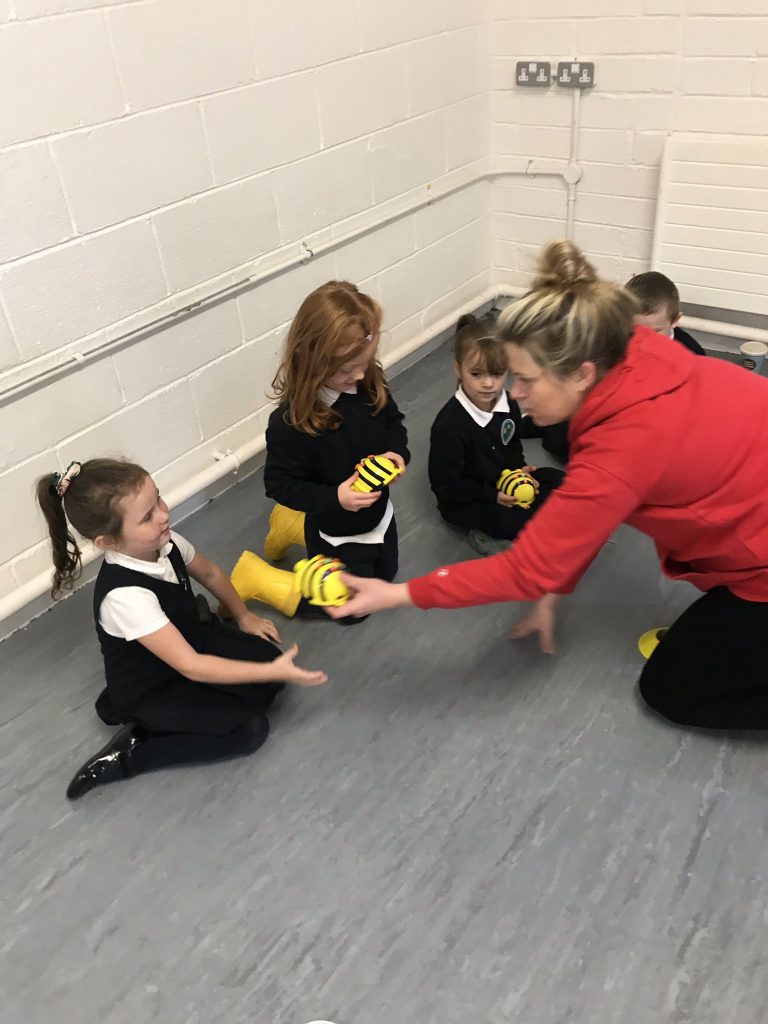
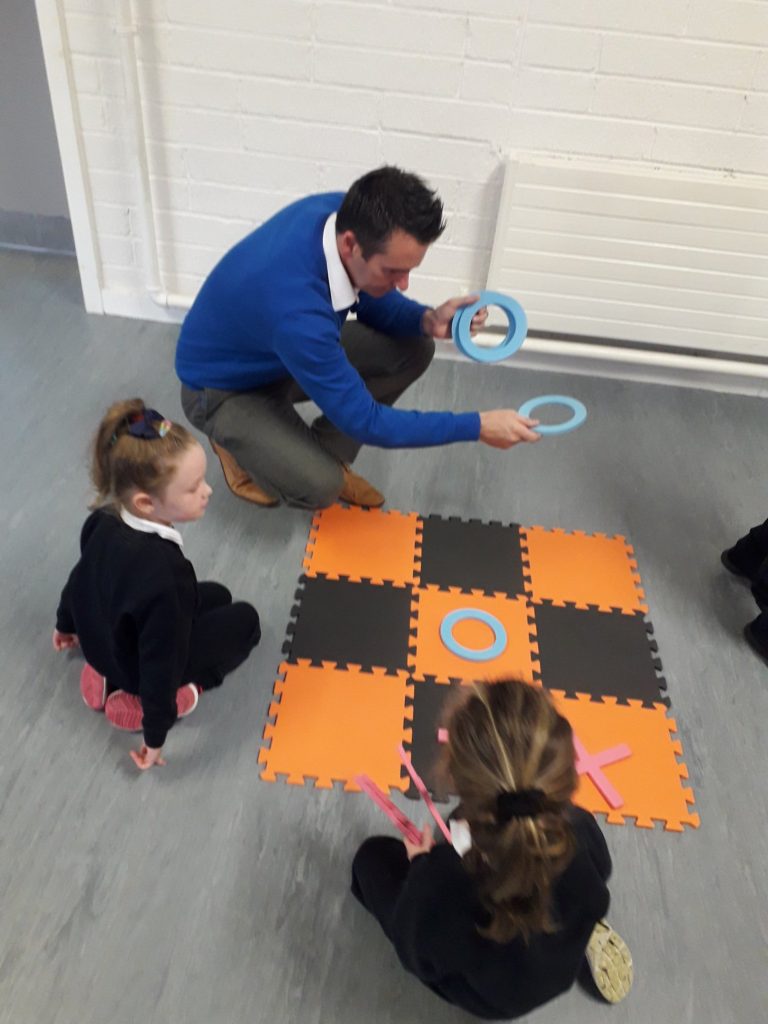
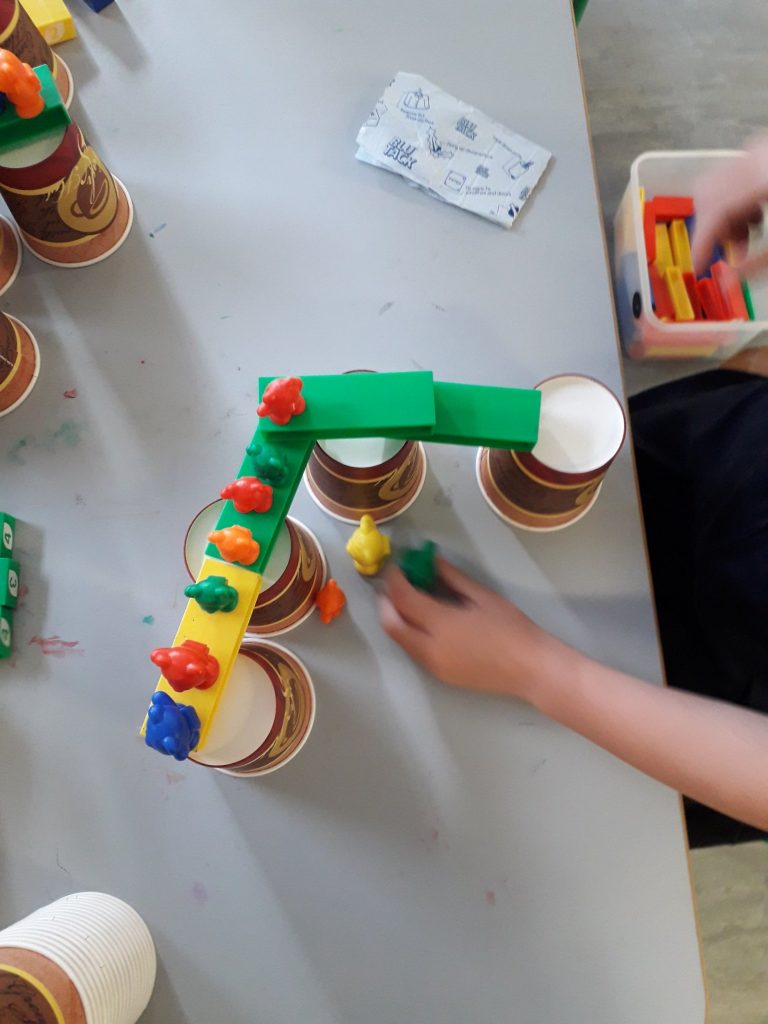
Enrolment for 2020-2021 will take place on Thursday (10th of October) and Friday (11th October) between 9am and 2pm in the school office.
Even children who have a sibling in the school MUST fill in an enrolment form.
Applications will only be accepted with:
- Completed application form (available below)
- Child’s birth certificate
- Proof of address (utility bill/bank statement
- You can view our admissions/enrolment form and admissions and participation policy by clicking the links below
- Enrolment form 2019 2020 Admissions & Participation Policy 2019
You can find directions to our school here. The office is located just inside the main front door.
On Tuesday evening, our 6th class graduated from St. Peter’s after a very successful year (and particularly, a very successful afternoon where they became only the second class to beat the teachers in the annual soccer match!)
This class have been very special to all of us in the school and we wish them all the best for the future. Student of the Year was Nathan Douglas for his school spirit, hard-working nature and friendship to all. Sportsperson of the Year was Leon Reynolds, not just for his ability, but for his encouragement of others and leadership on and off the pitch/track. Jamie Ryan was also recognised for his stellar performance during the Teachers vs Students match and Maddy Farrell and Nathan Douglas were acknowledged for having perfect attendance all year.
Huge thanks to the staff of the school, who attended and helped out with the day and to the Parents’ Association, who organised the refreshments after the ceremony. Also, a huge thanks to Greg from Signal Arts, who created the outstanding mural representing the members of 6th class. It’s very special to us that Jodie is also included in the mural, and the setting of it this year was her garden, at the request of the class.
Congratulations and best of luck to the class of 2019!
Count On Me from St Peter’s, Bray on Vimeo.
In St. Peter’s, we use Class Dojo to communicate with parents, to share your child’s work and to encourage your child to work hard and to be a good classmate. I’ll be in touch with the code that you need to set up your child’s account ahead of their first day.

